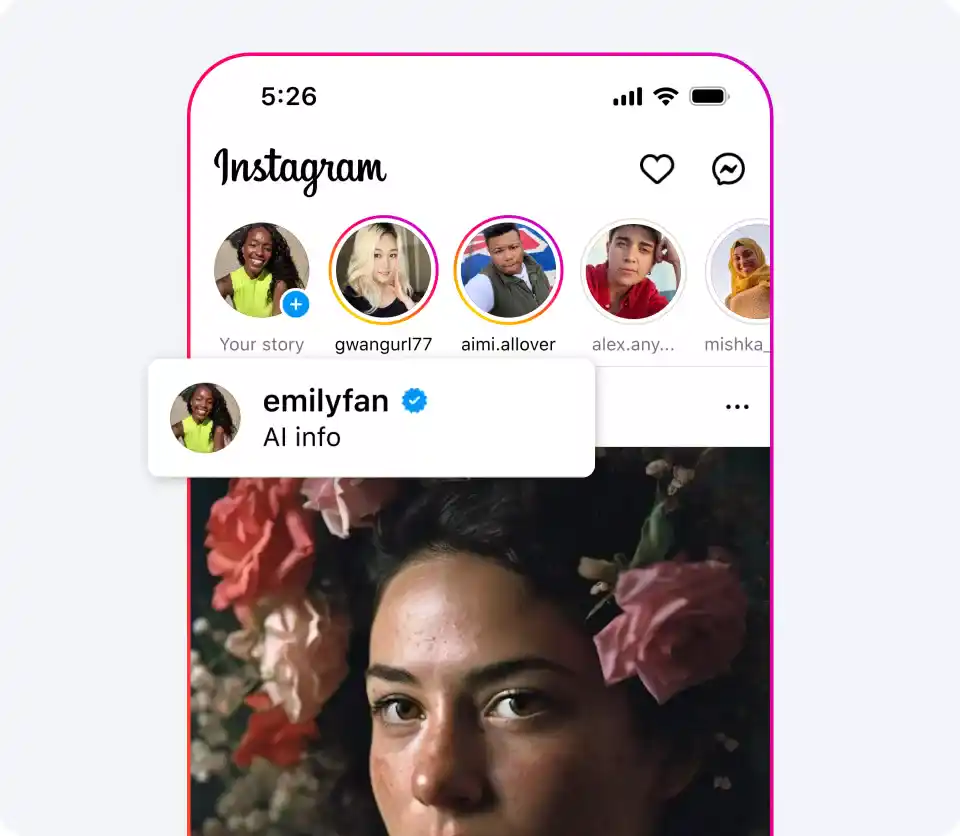Table of Contents
Introduction
Meta’s recent shift from the “Made with AI” label to “AI Info” across its platforms represents a significant evolution in how the company communicates the use of artificial intelligence (AI) in digital photos. This change comes in response to feedback from photographers and users who found the original label confusing and sometimes misleading. By adopting the “AI Info” tag, Meta aims to provide clearer context and reduce misunderstandings regarding the application of AI tools in image editing.
The Genesis of the “Made with AI” Label
Initial Implementation and Intent
In May, Meta introduced the “Made with AI” label to inform users when photos had been created or edited using AI-powered tools. The goal was to enhance transparency and provide insight into the technological processes behind the images. This initiative was part of a broader effort to build trust and educate users about the growing role of AI in content creation.
Photographers’ Feedback
However, shortly after its introduction, photographers voiced their concerns. They noted that the label was often applied to real photos that had undergone only minor modifications with basic AI tools. This led to confusion among viewers who might mistakenly believe that the entire image was generated by AI, rather than simply edited. For example, simple enhancements or retouching using AI-powered features were flagged as “Made with AI,” which did not accurately reflect the level of AI involvement.
Transition to “AI Info”
Responding to Confusion
In light of these concerns, Meta decided to replace the “Made with AI” label with “AI Info.” This new label is designed to address the ambiguity surrounding the previous tag by offering more detailed information about how AI tools were used in the image. The change aims to clarify that the presence of AI does not necessarily mean the photo was entirely created by AI but might involve AI in the editing process.
Clearer Communication
Meta acknowledged that the original “Made with AI” label did not always align with users’ expectations and lacked sufficient context. The updated “AI Info” tag seeks to rectify this by providing a more nuanced understanding. This label will help users discern between images wholly created by AI and those merely edited with AI tools, thus fostering better-informed interpretations.

Functionality of the “AI Info” Label
Underlying Technology
While the label has changed, the technology Meta uses to detect AI involvement in photos remains the same. Meta continues to rely on metadata standards such as C2PA (Coalition for Content Provenance and Authenticity) and IPTC (International Press Telecommunications Council). These standards provide technical metadata that includes information about the use of AI tools, allowing Meta to accurately label photos where AI has been applied.
Practical Application
For instance, if photographers use advanced tools like Adobe’s Generative AI Fill to remove objects or make specific adjustments, their photos will still be tagged under the new “AI Info” label. The distinction is that “AI Info” aims to communicate the extent and nature of AI usage more clearly. It indicates that while AI tools were involved, the image is not necessarily a product of full AI generation.
Advantages of the “AI Info” Label
The shift to “AI Info” enhances user understanding by providing more explicit context. Instead of a blanket statement that might imply complete AI generation, the new label details how AI tools contributed to the image. This approach helps users make more accurate judgments about the content they view, increasing transparency and reducing misconceptions.
Meta’s adoption of the “AI Info” label aligns with broader industry efforts to standardize AI transparency. By using clear and context-rich labeling, Meta sets a precedent for other tech companies, promoting ethical AI practices and fostering a better-informed digital ecosystem. This move supports a growing industry trend towards providing more detailed AI disclosures.
For photographers, the “AI Info” label addresses the frustration of having their authentic work mischaracterized as AI-created. By offering a label that recognizes the nuanced use of AI tools, Meta demonstrates its responsiveness to user feedback and its commitment to accurate representation. This adjustment helps build trust with content creators who rely on Meta’s platforms to showcase their work.
Challenges and Future Considerations
One challenge Meta faces with the “AI Info” label is striking a balance between providing enough detail to be informative without overwhelming users. The label needs to be concise yet descriptive enough to convey the role of AI in the photo effectively. This balance is crucial to ensure the label remains user-friendly and accessible.
As AI technology continues to evolve, Meta must stay adaptive in its labeling strategies. New AI tools and techniques will require ongoing updates to the “AI Info” label to ensure it remains accurate and relevant. Meta’s commitment to transparency means continuously monitoring advancements and adjusting the label accordingly.
Conclusion
Meta’s transition from the “Made with AI” label to “AI Info” marks a significant improvement in how the company communicates the use of AI in photo editing. By responding to user feedback and clarifying the role of AI, Meta aims to provide a clearer, more nuanced understanding of AI’s involvement in digital content. This change not only enhances transparency but also aligns with industry standards, promoting ethical AI practices. As AI continues to play a pivotal role in content creation, Meta’s approach sets a benchmark for responsible and transparent AI usage in the digital age.